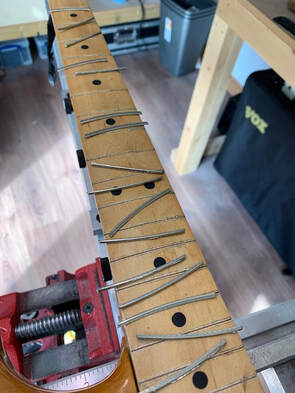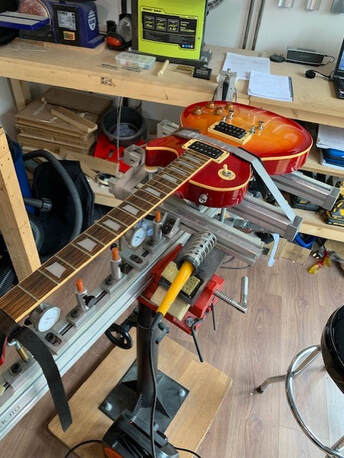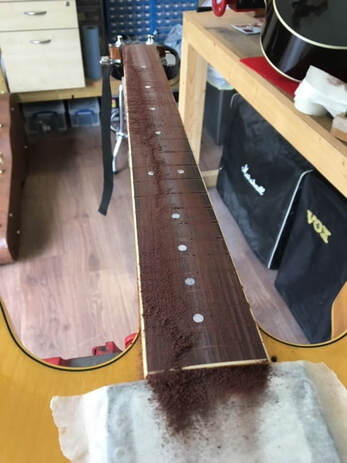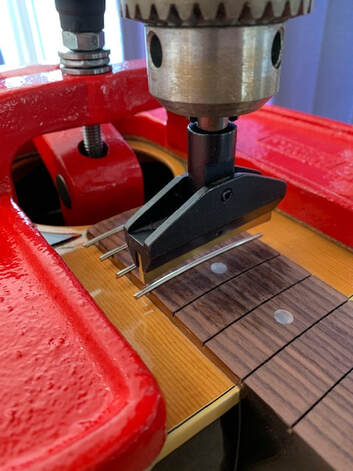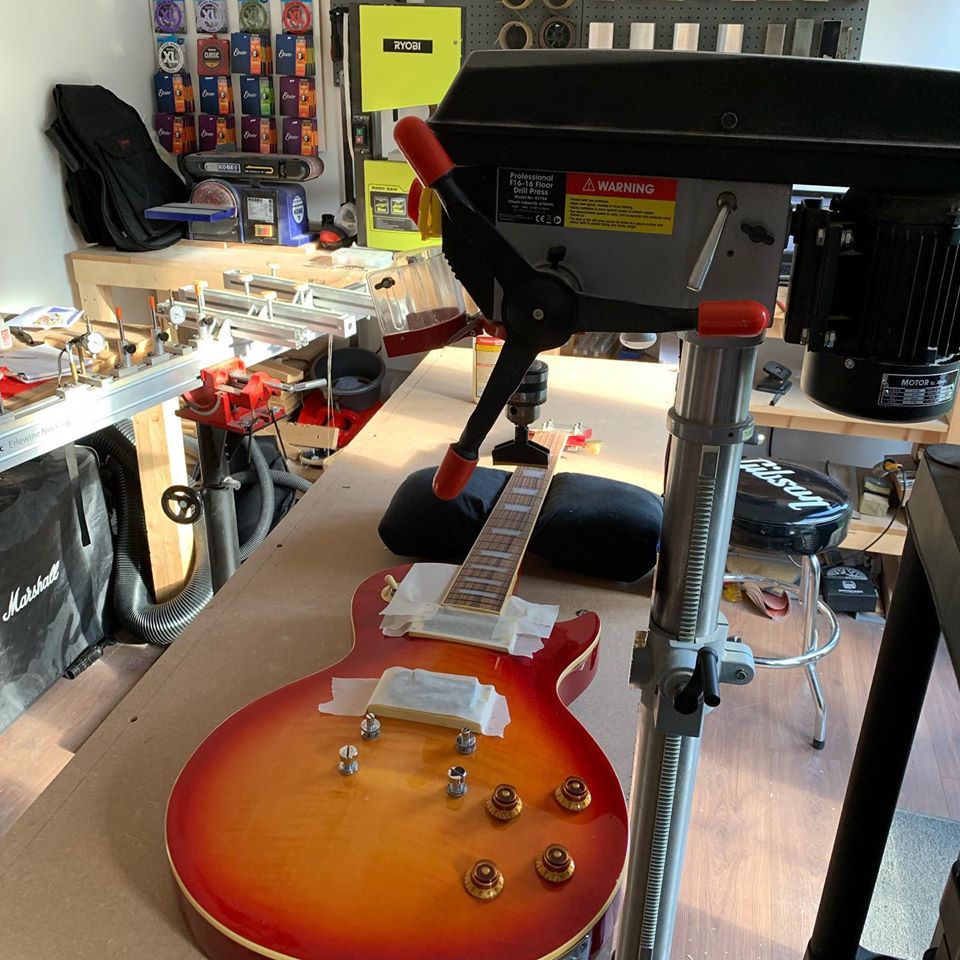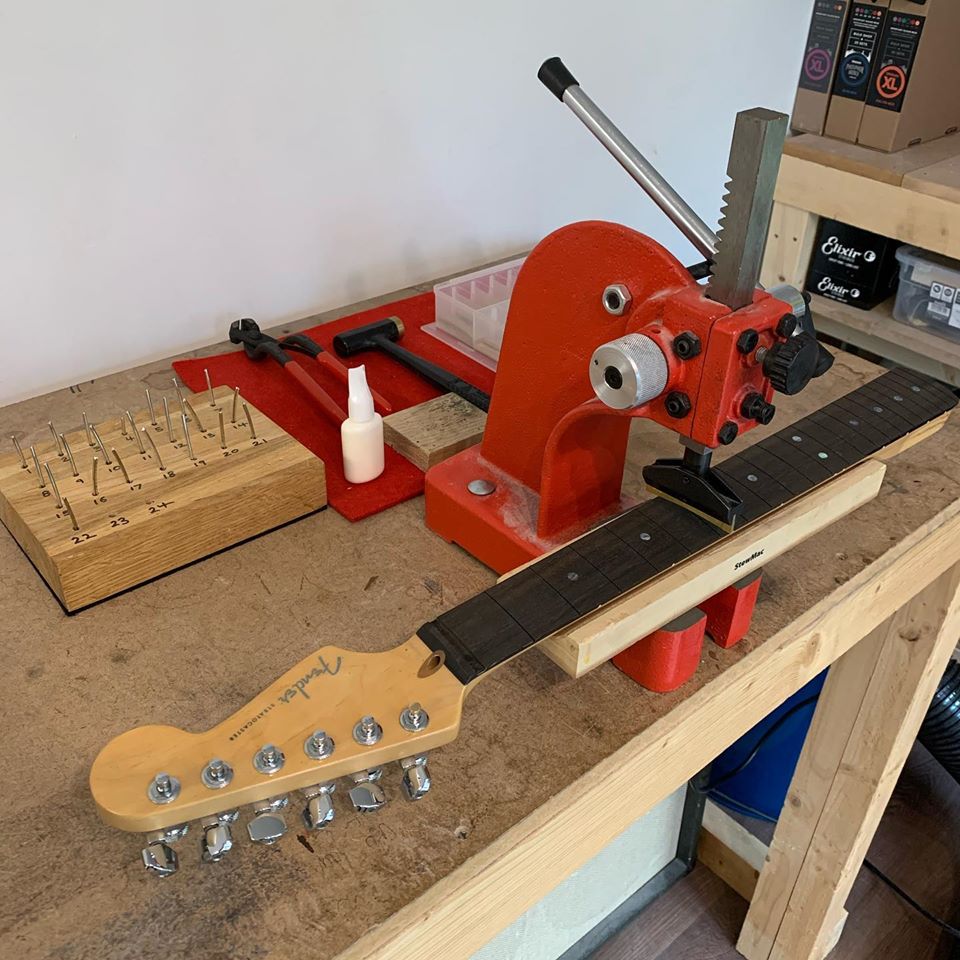Refret
The condition of your frets is critical to the play ability of your guitar. If you are looking for a buzz and choke free set up, with good intonation and plenty of sustain they may need some attention.
Often a fret level will solve most problems but if there is not enough fret height to level, they may need replacing.
We keep a good selection of fretwire in stock, from narrow vintage wire to super jumbo.
Often a fret level will solve most problems but if there is not enough fret height to level, they may need replacing.
We keep a good selection of fretwire in stock, from narrow vintage wire to super jumbo.

